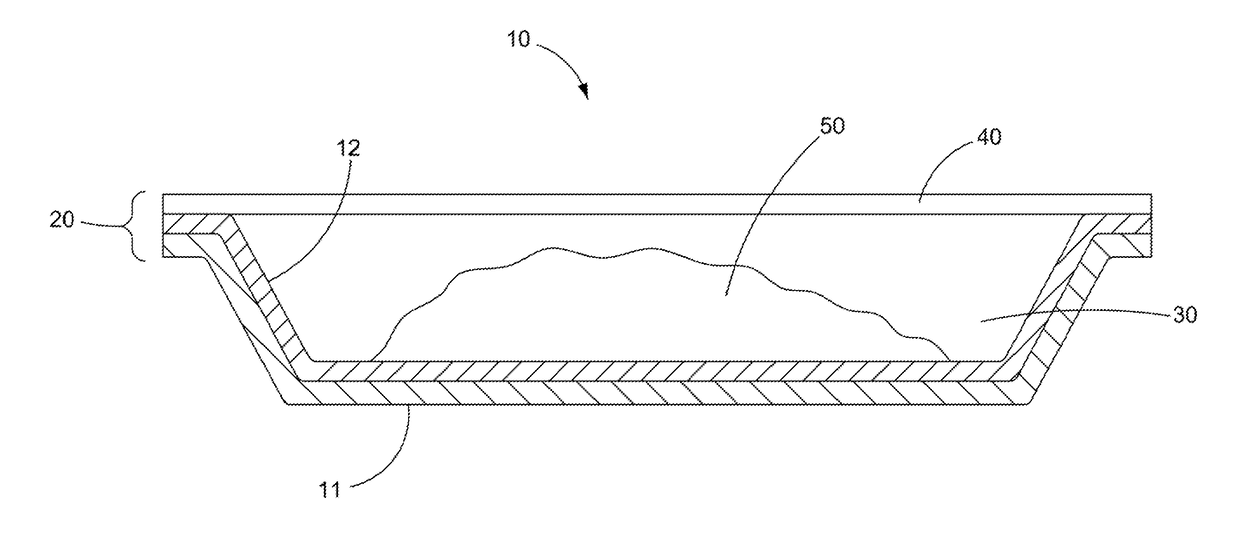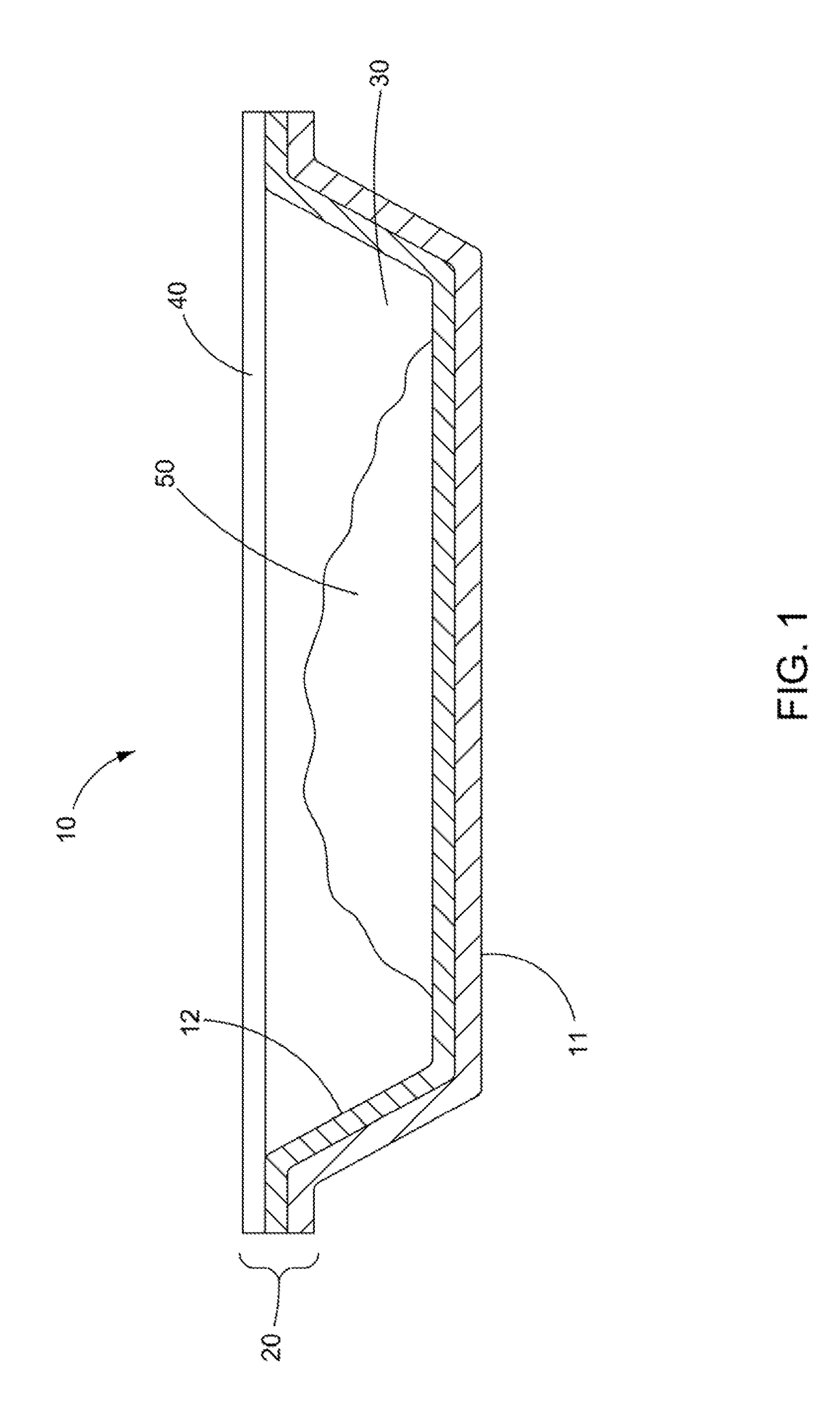Packaging tray with capping layer
a packaging tray and capping technology, applied in the field of primary packaging, can solve the problems of weak seals, difficult opening of packages without the use of knives or other cutting tools, etc., and achieve the effect of sufficient bond strength and easy peeling
- Summary
- Abstract
- Description
- Claims
- Application Information
AI Technical Summary
Benefits of technology
Problems solved by technology
Method used
Image
Examples
working examples
[0025]In the following Examples 1-13 and Comparative Examples 1-3, there is described various embodiments of a tray 10 having a two-layer structure as illustrated in FIGS. 1-2. In all these examples, the bulk layer 11 and capping layer 12 were co-extruded into a sheet form using single-screw laboratory extruders (LabTech Engineering Company, Ltd. Thailand) In all these examples, the thickness of the bulk layer was about 8 mil (203 micron) and the thickness of the capping layer was about 3 mil (76 micron).
example 1
[0026]Example 1 is one preferred embodiment of tray 10 of the present invention having a structure and layer compositions as described below. Reported below is the layer composition relative to the total weight of the layer.[0027]Layer 11: 86 wt.-% of a crystalline polyethylene terephthalate (CPET)-LASER+C9921 (DAK Americas LLC, Charlotte, N.C., USA) and 14 wt.-% of an additive mixture.[0028]Layer 12: 100 wt.-% of an ethylene methyl acrylate copolymer having a methyl acrylate content of 21.5 wt.-%, a density of 0.943 g / cm3 and a melt index of 0.4 g / 10 min-EMAC® SP2202 (Westlake Chemical Company, Houston, Tex., USA).
example 2
[0029]Example 2 is another preferred embodiment of tray 10 of the present invention having a structure and layer compositions as described below. Reported below is the layer composition relative to the total weight of the layer.[0030]Layer 11: 86 wt.-% of a crystalline polyethylene terephthalate (CPET)-LASER+C9921 (DAK Americas LLC, Charlotte, N.C., USA) and 14 wt.-% of an additive mixture.[0031]Layer 12: 100 wt.-% of an ethylene methyl acrylate copolymer having a methyl acrylate content of 20 wt.-%, a density of 0.942 g / cm3 and a melt index of 8 g / 10 min-DuPont™ Elvaloy® AC 1820 (E.I. du Pont de Nemours and Company, Wilmington, Del., USA).
PUM
| Property | Measurement | Unit |
|---|---|---|
| thick | aaaaa | aaaaa |
| thick | aaaaa | aaaaa |
| thickness | aaaaa | aaaaa |
Abstract
Description
Claims
Application Information
 Login to View More
Login to View More - R&D
- Intellectual Property
- Life Sciences
- Materials
- Tech Scout
- Unparalleled Data Quality
- Higher Quality Content
- 60% Fewer Hallucinations
Browse by: Latest US Patents, China's latest patents, Technical Efficacy Thesaurus, Application Domain, Technology Topic, Popular Technical Reports.
© 2025 PatSnap. All rights reserved.Legal|Privacy policy|Modern Slavery Act Transparency Statement|Sitemap|About US| Contact US: help@patsnap.com



